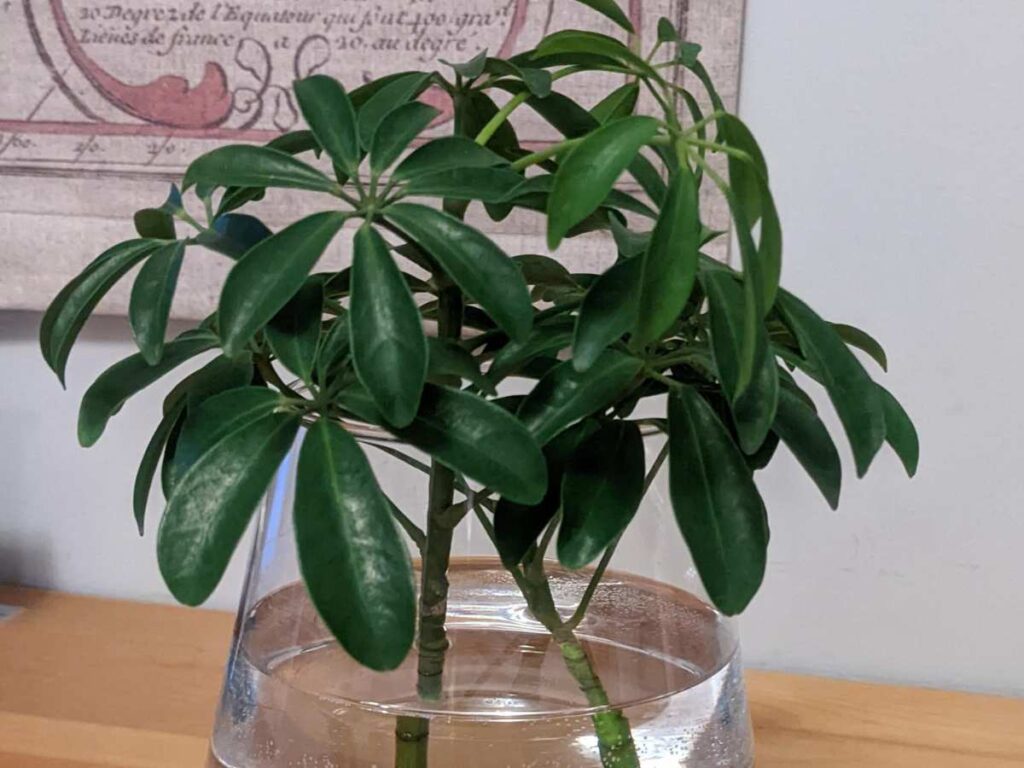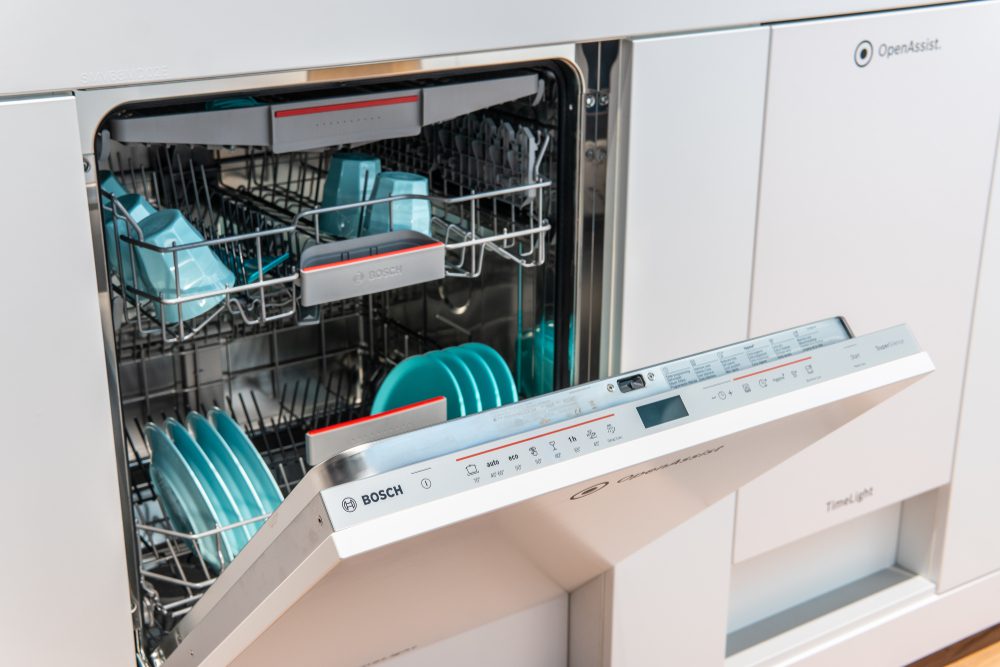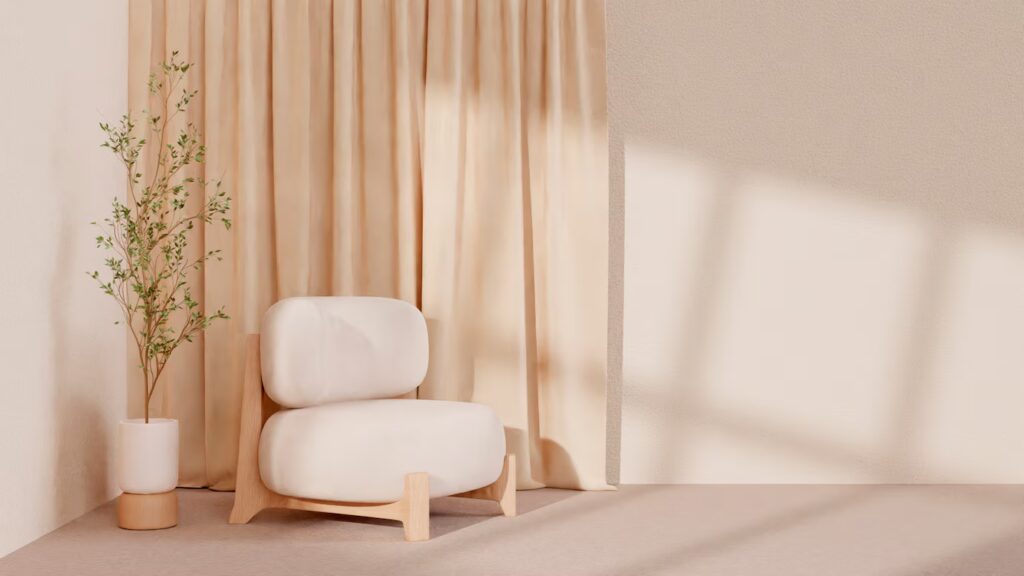Nature has a way of captivating us with its many mysteries, and the umbrella plant (Schefflera) is no exception. Its delicate leaves unfurl like an open fan to create a lush canopy, creating questions about how we can best care for such an enchanting specimen.
One frequent inquiry from gardeners is whether or not these plants enjoy being misted?
Like a great book that cannot be easily put down, let us explore what it takes to keep this tropical beauty thriving in our homes and gardens.
Here’s Do Umbrella Plants Like to Be Misted?
Umbrella plants require high humidity levels, so misting them regularly can help maintain healthy growth and keep the foliage looking vibrant. But too much misting can damage the plant. Additionally, the soil should always be kept moist to ensure optimal absorption of nutrients.

What Is Misting?
Misting is a gentle way of giving plants the moisture they need. It’s like taking a light rain shower to refresh them. Spraying water in tiny droplets on foliage and blooms can cool, cleanse, and boost hydration.
Here are five advantages of misting:
- A fine spray will encourage more flowers or fruit production for certain plants.
- Misting aids with consistency in air circulation, as well as providing humidity.
- Water droplets act as tiny lenses that capture sunlight, which helps prevent burning leaves by magnifying UV rays.
- The process helps keep pests away from your precious greenery.
- If you have indoor plants, misting keeps dust off their leaves, making them look vibrant and healthy!
The benefits of misting reach far beyond just watering. Plants may appear static, but they still need proper care and attention to remain healthy, especially during dry spells when their environment changes drastically.
By using this technique regularly, gardeners and plant parents can help ensure their beloved flora stay strong and beautiful all season long.
Benefits of Misting Umbrella Plants
The misting of umbrella plants is crucial for their health and vibrancy. This simple task brings numerous advantages, from elevating humidity to triggering new growth. The following highlights only a fraction of the benefits of misting umbrella plants:
Elevates Humidity:
Originating from warm and humid tropical regions, umbrella plants require high humidity levels. Misting imitates their natural environment and furnishes the plant with the necessary moisture for thriving.
Avoids Leaf Browning:
Brown and dry leaves indicate low humidity levels. Misting averts this by hydrating the foliage, preserving the plant’s verdant appearance.
Maintains Clean Foliage:
Dust and other particles can accumulate on the leaves of umbrella plants, obstructing photosynthesis. Misting keeps the foliage clean, ensuring the plant access to light for growth and flourishing.
Boosts Flowering:
The production of stunning and fragrant blooms by umbrella plants necessitates high humidity.
By misting regularly, you can provide optimal conditions for flowering, enabling your umbrella plant to exhibit its beauty and fragrance.
Enhances Leaf Elasticity:
Misting also enhances the elasticity of the leaves, making them firm and resilient.
This is crucial in preventing damage from heavy rainfall or strong winds that could topple the plant.
Induces New Growth:
Regular misting can induce new growth in umbrella plants, leading to a fuller and lusher appearance.
This is especially significant for plants grown in low-humidity environments, where misting counteracts the drying effects of air conditioning and heating.
Prevents Fungal Diseases:
High humidity levels foster the growth of fungal diseases in umbrella plants. By misting regularly, you can regulate humidity levels and decrease the risk of disease.
Deterrent to Spider Mites and Other Pests:
Misting also prevents spider mites and other pests, as these pests prefer dry environments.
Regular misting creates a more humid and less suitable environment for pests, reducing the risk of infestation.
What Happens if An Umbrella Plant Doesn’t Get Mist?
This unique tropical species can suffer from dryness and dehydration without regular misting. So what happens when your umbrella plant doesn’t get the moisture it needs? Here are four effects to be aware of:
- Without adequate hydration, growth will slow drastically. Leaves may become droopy or discolored due to a lack of nutrients in the soil.
- The roots may become weak or diseased due to insufficient water levels.
- Leaves may be yellow or wilt if not given enough humidity.
- An unmistakable umbrella plant could begin to shed leaves to conserve energy and resources.
Remember:
While some of these symptoms might seem minor individually, they can add up quickly into a much larger problem if you don’t regularly mist your umbrella plant.
To keep your tropical friend healthy and vibrant, create a consistent routine of misting every few days with clean water – making sure not to over-water!
What Are Some Signs that An Umbrella Plant Needs More Misting?
One way to tell if your umbrella plant requires additional misting is by examining its leaves. If they appear dry, droopy, or brittle, there may not be enough humidity in the air around them.
A surefire symptom of insufficient moisture levels is when flowers fail to open properly or don’t last very long after blooming.
Here are five straightforward methods for increasing humidity levels:
- Place trays filled with pebbles and water beneath the pot
- Use a spray bottle to lightly spritz both sides of each leaf
- Group plants together so their transpiration streams create humid microclimates
- Set up a humidifier near your indoor garden
- Take your outdoor potted plants inside during particularly dry conditions
For best results, regularly check for any changes in foliage texture and condition – you’ll soon develop a good sense of what’s right for your specimen!
What Kind of Water Should Be Used for Misting?
Misting umbrella plants regularly helps maintain healthy foliage by keeping them hydrated and well-nourished, so be sure to use the right water.
Tap water can contain minerals that build up in the soil over time, making it difficult for the roots to absorb nutrients. This could lead to stunted growth or even damage to the foliage.
Instead, use distilled or filtered water; these are free of mineral content and won’t harm your plant.
You should also avoid using cold water on your plant as this can shock them and cause their leaves to drop prematurely.
If you need to add moisture quickly, try a humidifier instead, this will help create a more consistent environment with steady humidity levels while avoiding any sudden temperature drops.
How Often Should You Mist an Umbrella Plant?
There’s no one-size-fits-all answer here. The number of times you should be misting your umbrella plant will depend on a few factors. In general:
- Daily mistings are likely needed for optimal health if your home has dry air.
- If your area has high humidity levels, then weekly mistings may suffice.
It’s also important to note that different plants require different amounts of water depending on their size and species. So if you need clarification on how often you should be misting yours, feel free to check with your local nursery or garden center first!
Also, make sure to use filtered or distilled water when possible, as tap water contains contaminants that could harm the delicate foliage over time.
To determine whether it is time to give your umbrella plant some H2O, feel the soil near its base – if the soil feels damp or moist, then hold off from watering until it begins to dry out again.
And remember: when in doubt, less is more! Overwatering and frequent mists can quickly turn into an unhealthy relationship with your beloved greenery. So take care and keep an eye on things for optimal results.
When Is the Best Time of Day to Mist an Umbrella Plant?
Take the example of Jane, who recently adopted an umbrella plant for her home. She’s been diligently watering it twice weekly since she got it but now wonders when the best time might be to add misting into her routine.
When it comes to misting your umbrella plant, timing can be everything. A light mist in the morning or evening will help the plant retain its moisture without sogging up its leaves.
Early morning is often ideal because humidity levels are highest, so plants absorb water more readily.
Refrain from overwatering because too much misting could do as much damage as not enough!
Make sure you give a gentle spray every few days rather than drenching the entire plant with each session.
If your environment tends to have low humidity throughout the day, consider adding some misting sessions during midday.
This will ensure your umbrella plant isn’t drying out during those hot summer afternoons or cold winter mornings.
Just ensure you don’t go overboard — err on caution by keeping mists short and sweet!
Should You Mist the Leaves or Soil of An Umbrella Plant?
For most types of umbrella plants, you should focus on misting the leaves rather than the soil. This will provide them with enough moisture without risking over-watering or causing root rot.
Don’t spray directly onto flowers, as this may damage delicate petals.
What Are the Potential Risks of Misting an Umbrella Plant?
The first risk is that too much misting can cause fungal growth on the leaves.
Fungal diseases such as powdery mildew and leaf spots thrive in humid environments. If you over-mist your umbrella plant, you could invite these unwelcome guests into your home!
Another possible danger when misting an umbrella plant is root rot.
If you’re not careful with how often or how much water you spray onto the soil, it can quickly become oversaturated and lead to rotting roots.
Poor drainage systems and inadequate soil aeration can also contribute to this problem.
Avoid fungal infections and root rot when misting your umbrella plant. Mist only once every couple of days for just long enough to lightly moisten the top layer of soil without creating any puddles around the base of the pot.
How Do You Set up A Misting System for An Umbrella Plant?
According to the National Gardening Association, over 70% of houseplants require regular misting to maintain their health and vigor.
Setting up a proper misting system for your umbrella plant can be surprisingly easy with the right materials and equipment.
To create an effective misting system for your umbrella plant, you’ll need a spray bottle or mister filled with distilled water and a timer that will allow you to adjust the time between each misting session.
It would help if you also considered investing in a humidity monitor to track how much moisture is in the air around your plant.
Start by spraying your plant lightly every one to two hours during its active growing season, then reduce this frequency once it enters dormancy.
Once you have set up a schedule that works best for your particular type of umbrella plant, stick with it!
Regularly checking on and adjusting your misting system will help ensure that your plant remains happy and healthy throughout the year.
Once everything is ready, all you have left to do is enjoy watching your beautiful umbrella plant thrive under its new care regimen!
Is Misting the Same as Watering an Umbrella Plant?
While both methods offer a source of hydration, there are some key differences to consider when deciding which one to use for your needs.
Misting
Misting provides short-term hydration to the surface of the plant’s leaves and soil.
This method helps create humidity levels that the plant craves while providing water droplets essential for photosynthesis.
However, many experts suggest that more is needed since all parts of the plant don’t always get equally moistened.
Watering
Watering an umbrella plant gives direct access to moisture by allowing it to soak up through the roots into every layer of foliage and stem.
This technique can provide more complete hydration than misting, help ensure long-term health, and regulate temperatures inside and outside the potting mix.
However, overwatering can cause root rot or fungal issues, so leave the liquid manageable at a time!
Understanding what works best for your specific species will go far in helping keep them healthy and thriving over time.
Conclusion
Umbrella plants are beautiful, exotic houseplants that can bring life to any home.
Misting is important in keeping these plants healthy and happy, as it helps them access the humidity they need to thrive.
Though some risks are associated with misting umbrella plants, the benefits outweigh them when done correctly.









